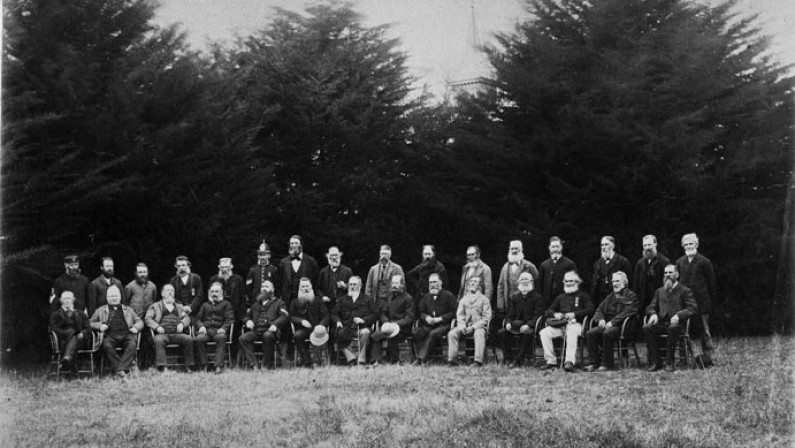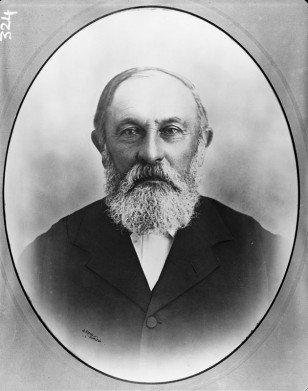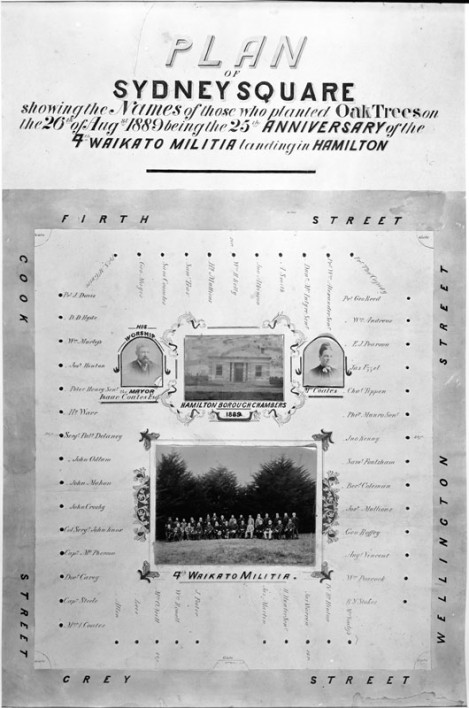Hamilton as a military settlement – 4th Waikato Militia

Following the Waikato Wars, the colonial government sought to maintain peace in the Waikato. Their solution was to use military settlers.

Veterans of the 4th Waikato Militia c.1889, HCL_01631
A recruitment campaign commenced. They would be offered land – one town allotment and one farm section as their incentive. The first three regiments were formed by October 1863. They recruited some men from within New Zealand, particularly gold miners but many were recruited from Australia.
More recruits were needed so Lieutenant William Steele was directed to travel to New South Wales to enrol a company of men. Family men were deemed more likely to become permanent settlers than single men so Steele was told to choose “respectable men with families”.
 Captain William Steele, HCL_00324
Captain William Steele, HCL_00324
By 3rd February 1864 Steele had enough men from both countries to form the 4th Regiment. The men came from a range of occupations. We know from the regimental roll, that at least 75 different occupations were represented.
The men were initially accommodated at barracks in Auckland before their journey down to Kirikiriroa. On 24th August 1864 the first group of men from the 4th Waikato Regiment stepped ashore in the area now known as Memorial Park. The men built a redoubt and lived in tents until their town sections were allocated. Their wives and children would join them later in batches.

A view of Hamilton West as taken from Hamilton East (probably Moule’s Redoubt), HCL_00480
It was November 1864 before the first contingent of wives and children reached the new settlement. A census taken in December 1864 showed there were 836 men and 660 women in the town, the vast majority no older than 40 years of age.

Wives of 4th Waikato Regiment c. 1889, HCL_00362
Not all the lands were suitable for farming. There were clumps of forest, very wet underfoot and areas of fern and manuka scrub. Before crops were established some subsisted almost entirely on military rations. The men had been promised that they would be able to earn money on government work such as road building but this work tended to be spasmodic. Many survived on very little income for the promise of freehold title to their farm sections at the end of three years.
The men and their families who stuck out the difficult times became the founders of the town that we know of as Hamilton. They would be joined by other settlers and would establish businesses which helped the town grow into one of New Zealand’s major cities.


Early Militia Cottages at the South end of Victoria Street, HCL_00390

Victoria Street c. 1900, HCL_00994
References
Barton, Leonard L. Australians in the Waikato War 1863-1864. (1979). Library of Australian History.
Gibbons, P. J. Astride the River: a history of Hamilton. (1977). Hamilton City Council.
Glen, Frank. For Glory and a Farm. (1984). Whakatane Historical Society – monograph no. 10.
Norris, H. C. M. Armed Settlers: the story of the founding of Hamilton, New Zealand 1864-1874. (1963). Pauls Book Arcade.
